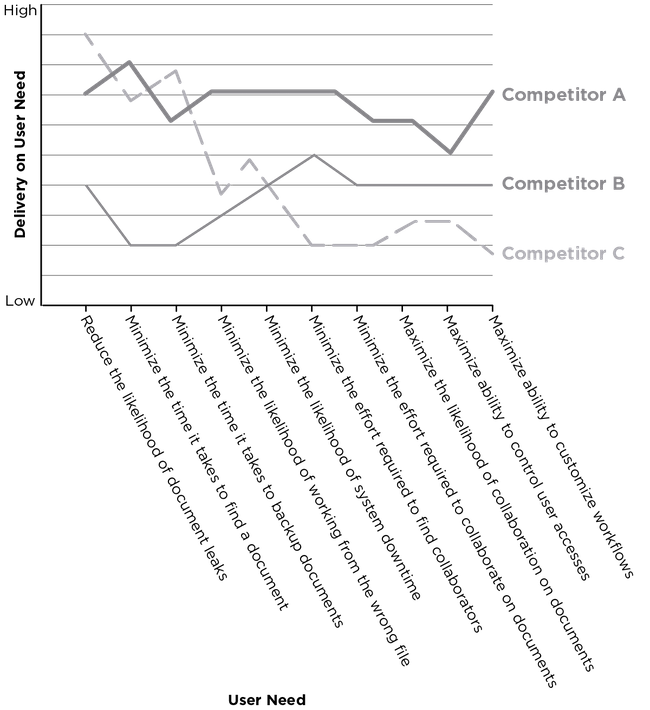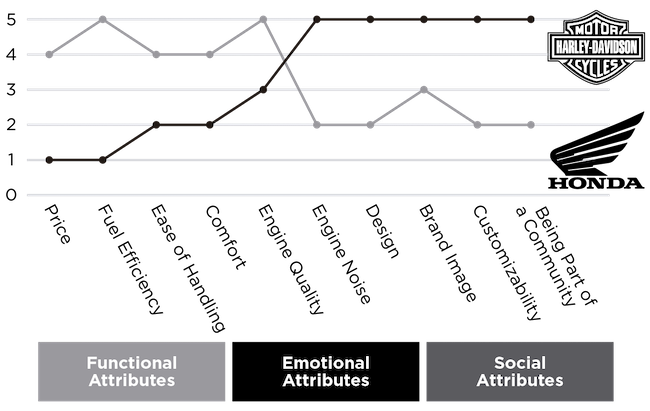“Strategy is about making choices, trade-offs; it’s about deliberately choosing to be different.” – Michael Porter, Author of Competitive Strategy
W. Chan Kim and Renée Mauborgne, professors at INSEAD and authors of Blue Ocean Strategy, created The Strategy Canvas to help capture the strategic landscape for an organization.
Early-stage businesses can use this canvas to explore possible strategic positionings for their innovation.
In its essence, the canvas helps compare how well competitors meet customer buying criteria or desired outcomes.

If you’ve done interviews or other types of customer research, you should have a good idea of which desired outcomes matter most, and the main competitors for the Customer Job that you are hoping to address. This should help you get started creating your own Strategy Canvas.
Analyzing the Strategic Positioning of Competitors
To create your own Strategy Canvas, list the 10-12 most important functional desired outcomes—or buying criteria—on the x-axis. On the y-axis, list the 3-5 most common competitors (direct, indirect, alternative solutions, and multi-tool solutions) for the Job.
To avoid going down the wrong path, only compare competitors and attributes that were uncovered through early research. Although there may be other criteria or outcomes that could help differentiate your offering, you should definitely confirm the existence of these criteria before basing your strategy on them.
Use the information collected through competitive research to rate competitors on each criterion.
Explore alternative positionings by reducing or raising the importance of certain attributes, or by creating or completely removing other attributes.

Further down the road, your product may be able to be differentiated on the basis of how well it addresses particular emotional or social attributes, but to begin with it’s generally safer to create differentiation based on the functional requirements of the product.

Clarity and Focus Wins
As an early-stage company, you can compete with a much less mature product by being more focused on the customers or on specific outcomes.
As investor Dave McClure says: “Your product can be far inferior, far more expensive, far more profitable than a big competitor’s product designed for a much bigger, more un-differentiated audience.”
To avoid creating too much complexity early on, focus your strategic positioning on a single attribute. For example:
We help dentists find new customers 10 times faster than traditional ads.
Can your differentiation be quantified?
If it can, what would success look like? Would your product need to drive five or fifty percent more leads to satisfy customer expectations?
The more precise your value proposition is, the easier it is for prospects to evaluate whether your product is worth considering.
Keep exploring until you find the right positioning for your product.
– –
This post in an excerpt from Solving Product. If you enjoyed the content, you'll love the new book. You can download the first 3 chapters here →.